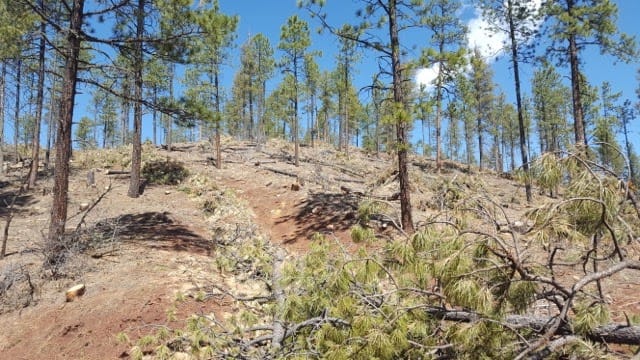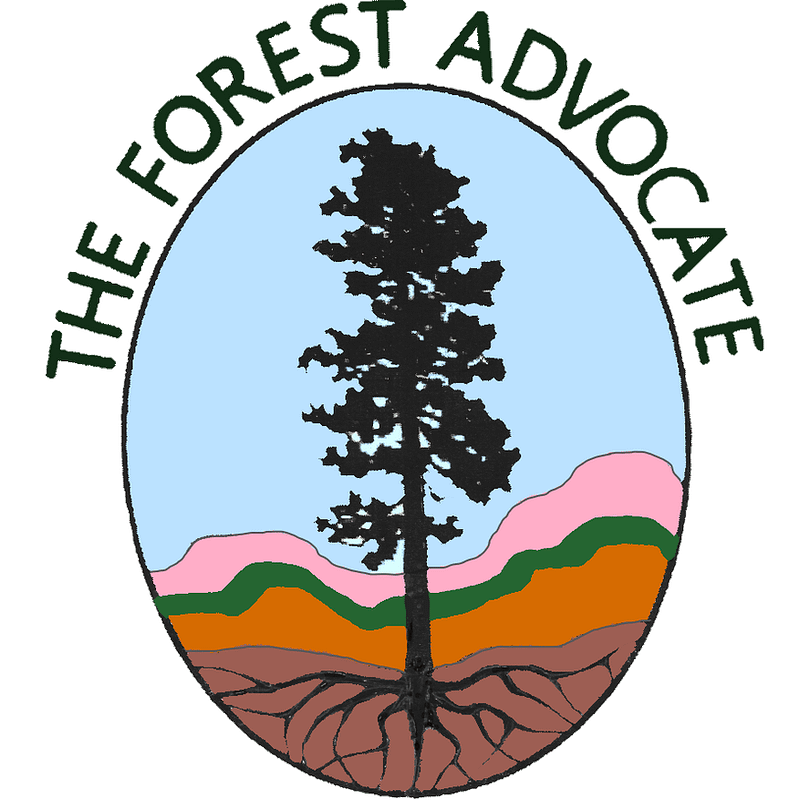How thinning forests can promote wildfire spread
George Wuerthner comments on atmospheric physicist Dr. Joseph Werne’s declaration in support of the plaintiff in Unite the Parks vs. US Forest Service.
by George Wuerthner April 21, 2021
As many of you know, one of the arguments that I and others have made against thinning forests is that it can often exacerbate fire spread by opening up a forest to wind penetration. Since wind is often the biggest factor that creates large blazes, thinning by reducing the “drag” created by dense timber, can actually enhance fire spread. Here are some details that might be useful for understanding this.
Recent findings about flawed wildland fire models, as reported by atmospheric physicist Dr. Joseph Warne. See Dr. Warne’s declaration from Unite the Parks v. U.S. Forest Service, E.D. Cal (2021).
- When ladder fuels are removed (by thinning), ground-level windspeed and turbulent mixing both increase, leading to faster fire spread and greater oxygen-transport efficiency; this, in turn, results in increased fire intensity.
- In many cases this aerodynamic effect is more important than the fire-dampening effects of the fuels reduction being evaluated.
- Two recent studies demonstrate just how consequential neglecting canopy wind-drag effects can be, leading to potentially disastrous results if aggressive ladder-fuel removal is applied. See Atchley et al. 2021, and Banerjee et al. 2020 (attached to declaration).
- Both papers demonstrate that the removal of ladder fuels reduces the sub-canopy wind drag, ultimately leading to increased fire spread.
- In other words, they both show how fuels-reduction treatments can increase fire spread, which is the opposite of what currently-used operational model studies predict.
- Furthermore, the Banerjee et al. 2020 paper goes further and also shows that aggressive ladder fuel removal increases the likelihood of overstory crown fires compared to more modest ladder fuel reductions, which is again opposite to operational model-run predictions.
- Other recent studies also confirm these findings. Coen et al. 2018 (attached to declaration) demonstrate that drought and fuel load were secondary effects compared to fire-induced atmospheric motions, which operational fire-behavior models neglect.
- Bradley et al. (2016) (attached to declaration) analyzed satellite data for 1500 fires from 1984 to 2014, affecting 23.5 million acres of forestland. Their results show that the more heavily forestland is managed, the more severely it burns, and the least-managed land (i.e., our National Parks and Wilderness Areas) are the most firesafe.
Summary and Conclusion:
- By omitting atmospheric dynamics and wind-drag effects associated with vegetation treatments, fuels reductions designed to reduce fire intensity and fire spread are undoubtedly producing the opposite effect.
- Given recent trends in California of ever-increasing fire size and severity, the desire to take decisive action to make things better is understandable. However, if our actions are ill-informed by flawed application of operational fire-behavior models, they are guiding us to make an already dire situation worse

The Forest Advocate
Santa Fe, New Mexico
